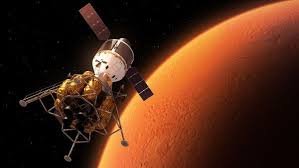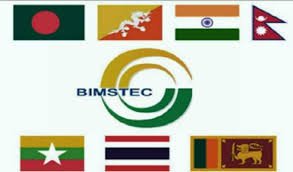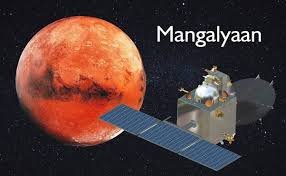India Unveils Mangalyaan 2: A Leap Towards Becoming the Third Nation to Land on Mars
India’s ambitious space program is set to reach new heights with the unveiling of Mangalyaan 2. The Indian Space Research Organisation (ISRO) announced plans to launch its second Mars mission, aiming to become the third nation to successfully land on the Red Planet. This development underscores India’s growing prowess in space exploration and technological innovation.
Mission Objectives and Significance
Mangalyaan 2, also known as the Mars Orbiter Mission 2 (MOM-2), is designed to build on the successes of its predecessor, Mangalyaan 1. The primary objectives of the mission include detailed exploration of Mars’ surface and atmosphere, conducting scientific experiments to gather data on Martian climate and geology, and testing new technologies for future interplanetary missions. This mission is crucial for enhancing India’s scientific and technological capabilities, fostering international collaborations, and inspiring a new generation of scientists and engineers.
Technological Advancements
One of the key highlights of Mangalyaan 2 is the incorporation of advanced technologies and instruments. ISRO has focused on developing more sophisticated payloads and enhancing the spacecraft’s autonomy and communication systems. The mission will also test new propulsion methods, aiming for greater efficiency and reliability in deep space travel. These advancements not only promise to yield valuable scientific data but also position India as a competitive player in the global space industry.
International Collaborations
Mangalyaan 2 is set to benefit from international partnerships, with ISRO collaborating with various space agencies and research institutions. These collaborations are expected to provide critical technological support, share expertise, and facilitate data exchange. Such partnerships are vital for addressing the complex challenges of space exploration and achieving the mission’s ambitious goals. Additionally, they reinforce India’s commitment to contributing to global scientific knowledge and fostering international cooperation.
Implications for Future Space Missions
The success of Mangalyaan 2 will have far-reaching implications for India’s future space endeavors. It will pave the way for more complex interplanetary missions, including potential missions to Venus and asteroids. The experience and knowledge gained from this mission will be instrumental in planning human spaceflight missions and establishing a sustainable presence in space. Furthermore, it will enhance India’s reputation as a space-faring nation and encourage greater investment in space research and development.

Why This News is Important
Strategic Technological Advancement
The announcement of Mangalyaan 2 marks a significant milestone in India’s space program. This mission represents a strategic technological advancement, showcasing India’s ability to develop and deploy sophisticated space technologies. Such advancements are crucial for national security, economic growth, and positioning India as a leader in the global space industry.
Inspiration and Education
Mangalyaan 2 serves as a source of inspiration for students and young professionals in the fields of science, technology, engineering, and mathematics (STEM). The mission highlights the importance of pursuing careers in these fields and demonstrates the exciting opportunities available in space exploration. By achieving such milestones, ISRO inspires the next generation to contribute to the nation’s scientific and technological progress.
International Prestige
Successfully landing on Mars will elevate India’s status on the international stage, placing it alongside the United States and Russia as the only nations to have accomplished this feat. This achievement will enhance India’s prestige, foster international collaborations, and attract foreign investments in its space sector. It will also demonstrate India’s capability to undertake complex scientific missions, reinforcing its role as a key player in global space exploration.
Historical Context
The Journey of Mangalyaan 1
Launched in 2013, Mangalyaan 1 was India’s first interplanetary mission and a monumental achievement for ISRO. The mission aimed to study Mars’ surface and atmosphere and develop India’s capabilities in deep space communication and navigation. Despite budget constraints, Mangalyaan 1 succeeded in entering Mars’ orbit in 2014, making India the first Asian country to reach Mars and the fourth space agency globally to do so. The success of Mangalyaan 1 laid the foundation for subsequent missions and demonstrated India’s potential in space exploration.
Global Mars Missions
Mars has been a focal point of interplanetary exploration, with numerous missions launched by NASA, ESA, and Roscosmos. These missions have provided valuable insights into Mars’ geology, climate, and potential for past life. NASA’s Curiosity and Perseverance rovers, ESA’s ExoMars, and China’s Tianwen-1 have all contributed to our understanding of the Red Planet. Mangalyaan 2 will add to this growing body of knowledge and further our collective quest to explore Mars.
Key Takeaways from Mangalyaan 2 Unveiled
| Serial Number | Key Takeaway |
|---|---|
| 1 | India is set to launch Mangalyaan 2, aiming to become the third nation to land on Mars. |
| 2 | The mission will focus on detailed exploration of Mars’ surface and atmosphere using advanced technologies. |
| 3 | ISRO is collaborating with international space agencies and institutions for Mangalyaan 2. |
| 4 | The success of Mangalyaan 2 will pave the way for future complex interplanetary missions by India. |
| 5 | Mangalyaan 2 enhances India’s prestige in the global space industry and inspires future generations in STEM fields. |
Important FAQs for Students from this News
1. What is Mangalyaan 2?
Mangalyaan 2, also known as Mars Orbiter Mission 2 (MOM-2), is India’s second interplanetary mission aimed at exploring Mars. It follows the success of Mangalyaan 1 and seeks to conduct detailed scientific studies of Mars’ surface and atmosphere.
2. What are the main objectives of Mangalyaan 2?
The primary objectives of Mangalyaan 2 include studying the Martian surface and atmosphere, conducting scientific experiments to gather data on Mars’ climate and geology, and testing new space technologies for future interplanetary missions.
3. Why is Mangalyaan 2 significant for India?
Mangalyaan 2 is significant as it aims to make India the third country to land on Mars, showcasing the country’s growing capabilities in space exploration and technology. It will also boost India’s international prestige and foster collaborations with other space agencies.
4. How does Mangalyaan 2 differ from Mangalyaan 1?
Mangalyaan 2 will incorporate advanced technologies and instruments, including improved payloads, autonomous systems, and new propulsion methods. While Mangalyaan 1 was an orbital mission, Mangalyaan 2 aims for a more comprehensive exploration, potentially including a lander.
5. What are the potential impacts of Mangalyaan 2’s success?
The success of Mangalyaan 2 will enhance India’s reputation in the global space community, encourage greater investment in space research, and inspire the next generation of scientists and engineers in India.
Some Important Current Affairs Links













